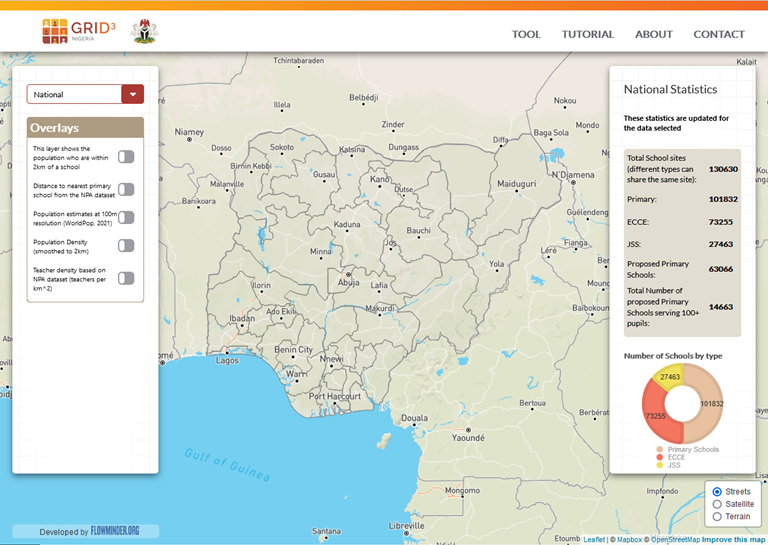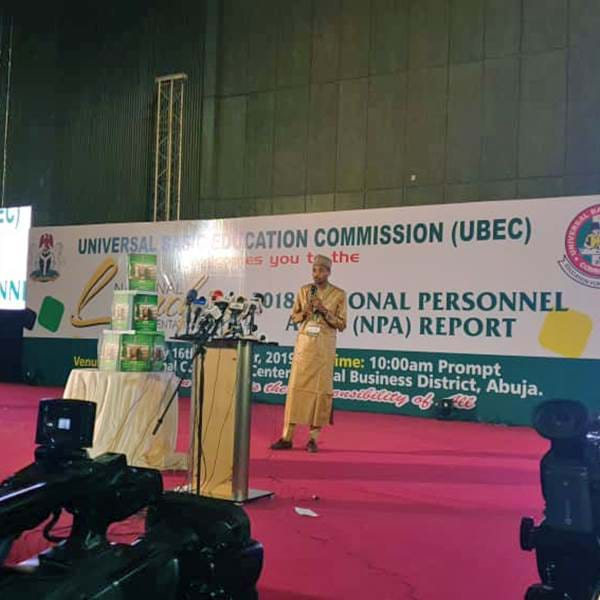Nigeria faces a significant challenge with a staggering out-of-school population estimated at 10.5 million, making it the highest in the world.
This is due to a range of socio-cultural and economic factors, with limited access to educational facilities being a prominent concern. Research findings indicate that several factors contribute to primary school absenteeism in the northwestern region of Nigeria, including low parental education levels, gender disparities, low household incomes, perceived teacher performance, and the considerable distances children must travel to reach schools. Notably, the distance factor plays a critical role, with children living more than 20 minutes away from a school being 52% less likely to attend.

To address this educational access challenge, Nigeria's Universal Basic Educational Commission (UBEC) has implemented various policies aimed at reducing absenteeism, one of which mandates that no student should have to travel more than 2 kilometres to their nearest school.
Under the GRID3 Nigeria project, Flowminder and other GRID3 implementing partners, in collaboration with UBEC, harnessed geospatial data to analyse the geographical distribution of existing schools relative to Nigeria's school-age population, and modelled suitable locations for new schools.
Assessing access to education nationwide
To understand the current state of Nigeria's education system, Flowminder and GRID3 Nigeria initially analysed data from UBEC's National Personnel Audit (NPA) dataset in relation to GRID3 population estimates. The team determined the percentage of children within each local government area (LGA) residing within a 2-kilometre radius of an existing school. The findings uncovered that the lowest percentages were observed in the North East, particularly in Borno state, while several LGAs in South South and South East states exhibited rates as high as 95-100%.
In late 2019, these findings were presented to UBEC, receiving a positive reception. Subsequently, Flowminder/GRID3 Nigeria provided training to a technical team established by UBEC, equipping them with the skills needed to independently conduct geographic information system (GIS) analyses.
Figure 1 (right): Percentages of children aged 5 to 10 living within 2 kilometres of a primary school across different LGAs. Source: GRID3, the Universal Basic Education Commission, eHealth Africa, and Proxy Logics Limited.
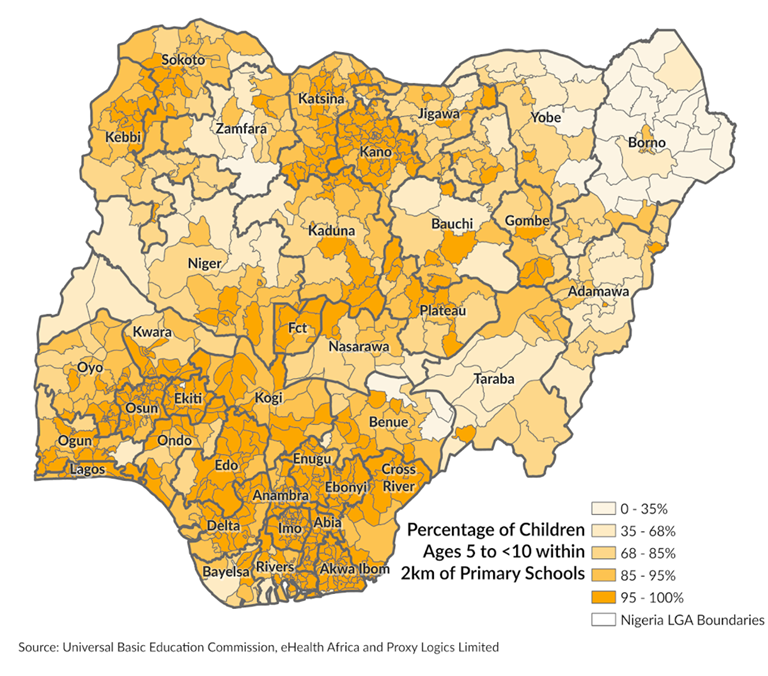
Modelling the optimal placement of new school locations
Another vital aspect of our approach was to determine the optimal locations for new schools. Flowminder developed an optimisation model that simulates school placement to maximise coverage and education access.
The model's results indicate that while there are diminishing returns when adding more schools, strategically establishing the first few hundred or thousand schools have a significant impact.
Figure 2 (right): Map of Nigeria depicting existing school locations and proposed sites for new schools based on Flowminder's school optimisation model. Data source: GRID3, the Universal Basic Education Commission, eHealth Africa, and Proxy Logics Limited.
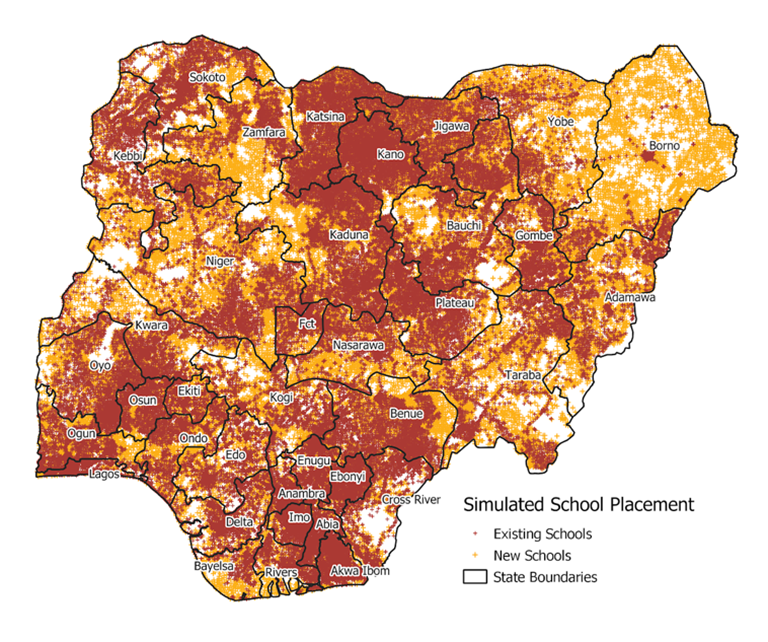
Our approach
Flowminder's model relies on two key datasets: the GRID3 Nigeria gridded population estimates (WorldPop, 2019), which also contain age-sex proportions (5-9 years; 10-14 years; and all school-age children), and Nigeria's existing school data from the National Personnel Audits (NPAs).
The 2018 National Personnel Audit (NPA) dataset of the Universal Basic Education Commission (UBEC) was officially unveiled by the Minister of Education, Mallam Adamu Adamu, acting on behalf of the President of the Federal Republic of Nigeria, on 16 December 2019. The NPA dataset is a comprehensive repository of geographically tagged information about schools across the nation. It includes school-specific details such as school type, available facilities, the number of teachers, and attendance statistics categorised by age groups.
During the launch event, Flowminder / GRID3 Nigeria presented an initial analysis demonstrating how the selection of new school locations could be optimised by combining the NPA data with GRID3's gridded population estimates and harmonised administrative boundaries.
The analysis unveiled that to achieve the desired goal of enrolling 99.1% of school-age children aged 5 to 10 who live within a 2-kilometre radius of a school, the country would need to establish an additional 20,000 schools strategically placed in specific locations.
Figure 3 (right): Percentage of the school-age population residing within 2 kilometers of a school in relation to the number of newly constructed schools.
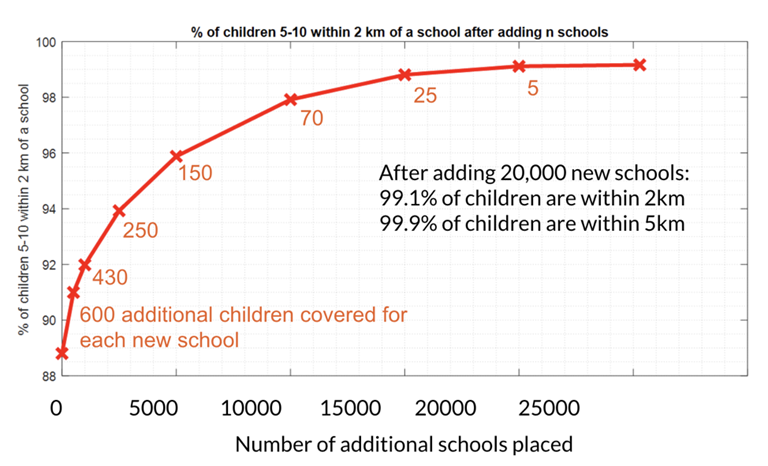
Later on that year, Flowminder released, under the GRID3 Nigeria project, a portal making freely available all of the optimisation model outputs.
This GRID3 Nigeria school placement optimisation dashboard have been developed by the Flowminder Foundation, an implementing partner of the GRID3 programme, in partnership with the Universal Basic Education Commission (UBEC).
